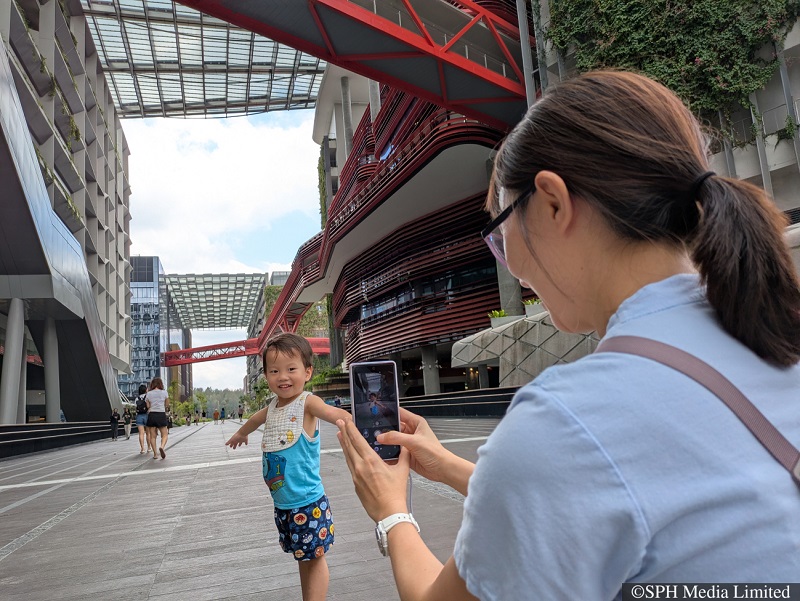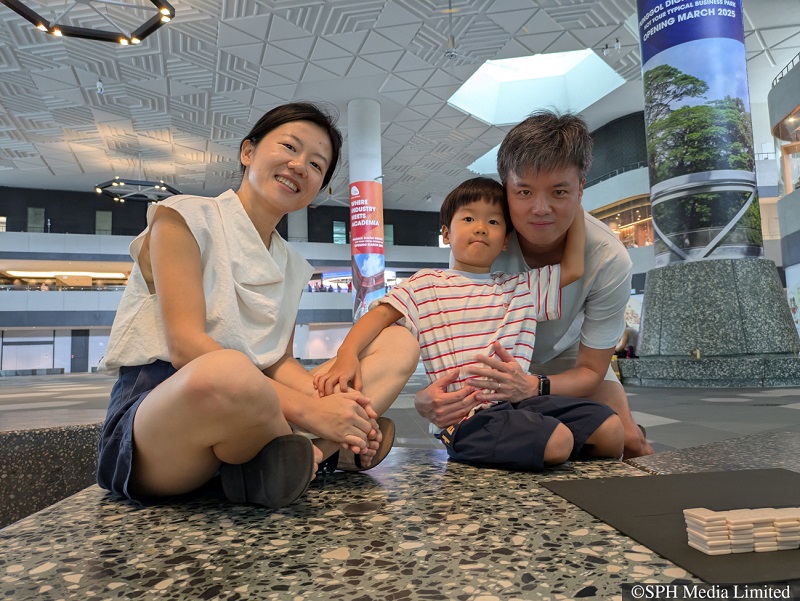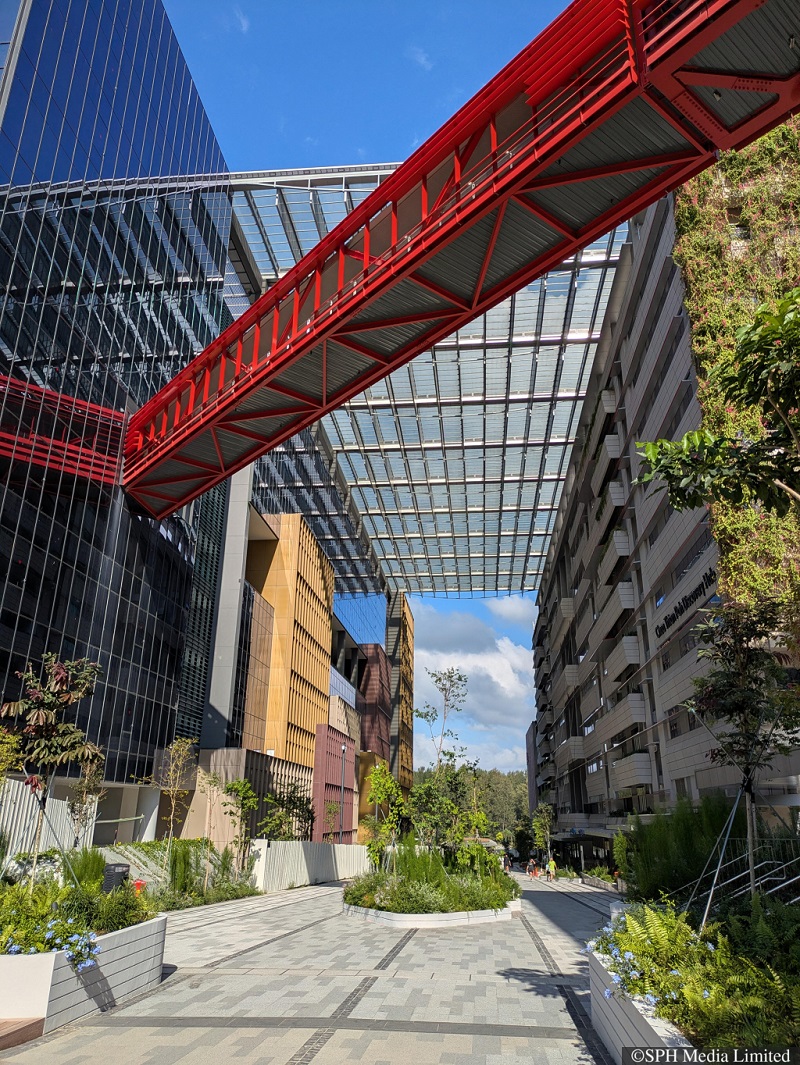Written by Teo Kai Xiang, The Straits Times

Despite being slated for completion only in 2026, Singaporeans are already flock to the Punggol Digital District. Photo: The Straits Times
SNGAPORE – Singapore’s newest attraction is no theme park or resort, but an under-construction tech park in the country’s north-eastern tip.
Punggol Digital District (PDD) may not be slated for completion until 2026, but that has not stopped curious visitors from exploring the area.
On the first two weekends of March, The Straits Times observed many visitors – most of them families with young children – posing for photos and peeking at cordoned-off areas of the futuristic development.
One such visitor was software engineer Norman Yeo, 26, who spent two hours walking from his home in Hougang to PDD and nearby Coney Island.
“Singaporeans like new things and new MRT stations, but it’s curious because there are not many shops open here yet,” he said.
Thus far, a small number of tenants such as Japanese lifestyle brand Muji and budget retailer Daiso have opened at Punggol Coast Mall, as well as eateries Sushi-Go and Astons.
Part of the area’s appeal stems from limited weekend “domestic tourism” options, said visitors.
“Singapore doesn’t have so much going on, what else would people do with their weekends?” said Mr Elston Aw, 29, a software engineer and Ang Mo Kio resident visiting the area for the first time. “If you open an air-conditioned space, Singaporeans will fill it.”
PDD’s distinctive architecture as Singapore’s first smart district is another key draw.
Spanning 50ha of land, it will host a business park, hotel, the Singapore Institute of Technology’s (SIT) new campus and Singapore’s Cyber Security Agency building.
Mrs Yang Han, 38, who came from Lavender with her husband and young son, said: “We are architects, so we try to check out places that are new, and also to find a place for our son to run around on weekends.”
She added that PDD’s open-air design and room for many communal spaces were reminiscent of the earlier work of Singapore-based architecture studio Woha.

Mrs Yang Han, 38, and her family travelled from Lavender to admire the district's distinctive architecture. Photo: The Straits Times
Woha was the masterplan designer and lead consultant in the planning and construction of the district. The company has won awards for its work on the Parkroyal Collection Pickering hotel and the School of the Arts Singapore campus – designs which also marry natural and modern architectural elements.
Dr Nikhil Joshi, senior lecturer at the National University of Singapore’s (NUS) department of architecture, said sustainability is what makes the district stand out, with pedestrianised areas, underground roads and integrated greenery.
He added that this is what distinguishes the district from its tech-focused cousins, such as the United States’ Silicon Valley and India’s Hyderabad, which also place a strong focus on combining work, home and play in one area.
“It’s more than architecture, which can be subjective,” says Dr Joshi. “You either like the colour of a building or you don’t, but what they have done here – the sustainability and smart features they’ve incorporated – that’s the best part of it.”

Visitors are likely drawn to Punggol Digital District's implementation of a walkable and sustainable smart city, says Dr Nikhil Joshi. Photo: The Straits Times
Beyond architectural appeal, nearby residents said witnessing the area’s development carries special significance. Construction on PDD began in 2020, and is part of broader efforts to transform what was once one of Singapore’s most untouched areas into a bustling hub.
Punggol resident and business consultant Chris Selvakumar, 32, noted that the new amenities mean they will have less need to travel to Waterway Point mall.
For public servant Rachel Ngo, 42, the development fulfils a long-held wish. She was visiting the district with her husband, who wanted to be known only as Mr Rui Siang, and their three children aged between five and 10.
“We graduated from NUS, and he said years ago, ‘Why can’t we have a university in Punggol?’” she recalled, referring to the new SIT campus.
“That was 25 years ago,” Mr Rui Siang, a 42-year-old tech worker, added. “So, it’s really nice to see it happening.”
Source: The Straits Times © SPH Media Limited. Permission required for reproduction.
 A Singapore Government Agency Website
A Singapore Government Agency Website
